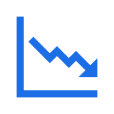

Financial institutions are moving out from the old pricing schemes to dynamic risk-based pricing for various products including loans, mortgages, and insurances. Instead of utilising legacy rules-based matrices, companies have turned to machine learning and predictive modeling to establish risk-based loan pricing and loan terms based on credit profile and creditworthiness or the associated ability of the borrower to pay back the loan.
Through these tools, lenders can use various factors such as credit score, debt-to-income ratio, loan tenure, and more, to determine the appropriate interest rate for each customer. This includes understanding and prediction on the likelihood of default as well as overall borrower repayment performance.
Developments in computational technology, data engineering, and digitisation of general processes can now transform how banks and other lending facilities can create and implement risk-based pricing structures. With pricing complexity solutions emerging and with declining cost in high-performance computing, these institutions can use larger and more diverse data sets to build more sophisticated analytical pricing models. Unsurprisingly, several industry leaders are already capitalising on the benefits of these developments.





